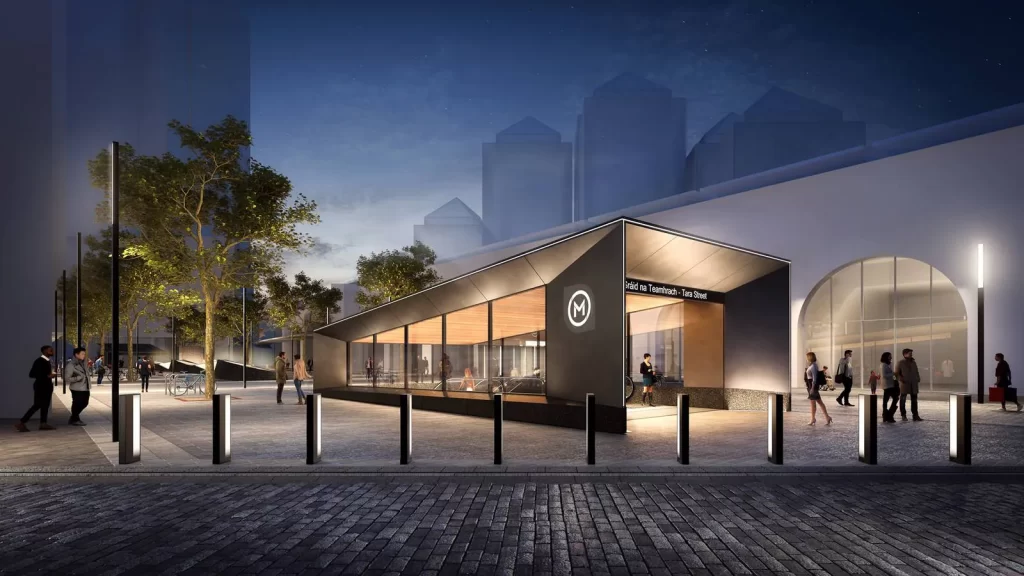It was reported recently that enabling works on the site of the new National Maternity Hospital on the campus of St Vincent’s hospital are to commence shortly. Some €46 million has been earmarked for these works which consist of removing staff from existing buildings and carrying out of groundworks for the new building. The public procurement process for the site clearance and groundworks was, apparently, signed off last July.
This “good news” was announced by Minister for Health Stephen Donnelly. But he admitted that the total cost of the 244-bed maternity hospital remained unknown. Donnelly explained that the remaining public procurement processes could delay the building programme by 18-21 months – the guts of two years. That delay would, he said with regret, inevitably add to the unknown total cost. But he insisted that the new maternity hospital would be completed or “delivered” before “the end of the decade”. That is six years from now.
That flexible time planning set me thinking. How long will it have taken from the final decision to locate the hospital at the Elm Park campus to the first delivery of a baby born there? And how long will it have taken from the initial decision to move the National Maternity Hospital from its Holles Street site?
Putting a price tag on the project is almost impossible at this stage without detailed specifications, plans, drawings and a further public tendering process. Will the project be based on the contractual regime used to build the National Children’s Hospital at the St James’s campus – with similar incapacity to control ballooning construction costs? Or will there be a public-private partnership (PPP) to deliver the project along the lines of the criminal courts complex?
What is it about the State that causes massive delays and overspends on nearly everything that it attempts to do by itself?
Looking back to my time as a minister, I recall that when construction of a three-storey building at the Garda college in Templemore was adjudged necessary to expand the force to 14,000 members, the building works were carried out and completed by contractors within the 12-month period fixed by contract.
When that government decided to build out the motorway network, it did so successfully, mainly using PPP toll road procurement. That massively important and beneficial infrastructure would never have been provided by previous snail’s pace procedures.
We planned to build a modern prison campus at Thornton Hall by a PPP process financed in part by the proceeds of making the 20-acre campus at Mountjoy Prison available for a major north-inner-city residential development. The cost of acquiring the 150-acre campus in north county Dublin was entirely covered by the sale of Shanganagh Castle open prison for €30 million; Thornton Hall is geographically closer to the GPO than Shanganagh.
The irony is that Dún Laoghaire-Rathdown County Council, which ultimately owned the 30-acre Shanganagh site for social and affordable housing, sat on it for at least 12 years before handing it over to the Land Development Agency. No homes have yet been completed there. Meanwhile Mountjoy continues as a completely overcrowded, drug-infested Victorian prison complex, offering little hope of rehabilitation for its inmates. Thornton Hall will be built – hopefully by PPP.
That all brings me to Metrolink – the plan to build a mainly underground railway from Swords via the airport to Dartmouth Road in Ranelagh. Looking at the process so far, we have designed and shelved at vast cost a different scheme to provide an east-west underground Dart from Heuston to Connolly. We have also shelved at similarly huge cost plans to cannibalise and close for two years the Luas Green Line, to extend Metrolink from Ranelagh to Sandyford. We have long-fingered costly plans to expand the surface Luas network.
Instead, An Bord Pleanála is shortly to commence public hearings on the National Transport Authority’s plan to build Metrolink. If approved, the project would probably take another decade, and the Dáil’s public accounts committee recently expressed concerns that it might ultimately cost in the region of €20 billion. The total planning bill is probably a quarter of a billion by now.
We should now pause for a brief three months and ask a simple question. Would surface Luas-type service lines not provide an earlier, cheaper service for Swords and the airport? Yes, it might involve using compulsory purchase and demolition of some suburban homes and buildings to clear a tramway. But the new, very light rail technology developed since the existing Luas lines were built could give us a dramatically different transport system for Dublin for the same cost as the Metrolink terminating at Dartmouth Road.
Before the Metrolink juggernaut becomes an irreversible money pit, should we not spend 12 weeks considering the alternatives for the first time?

